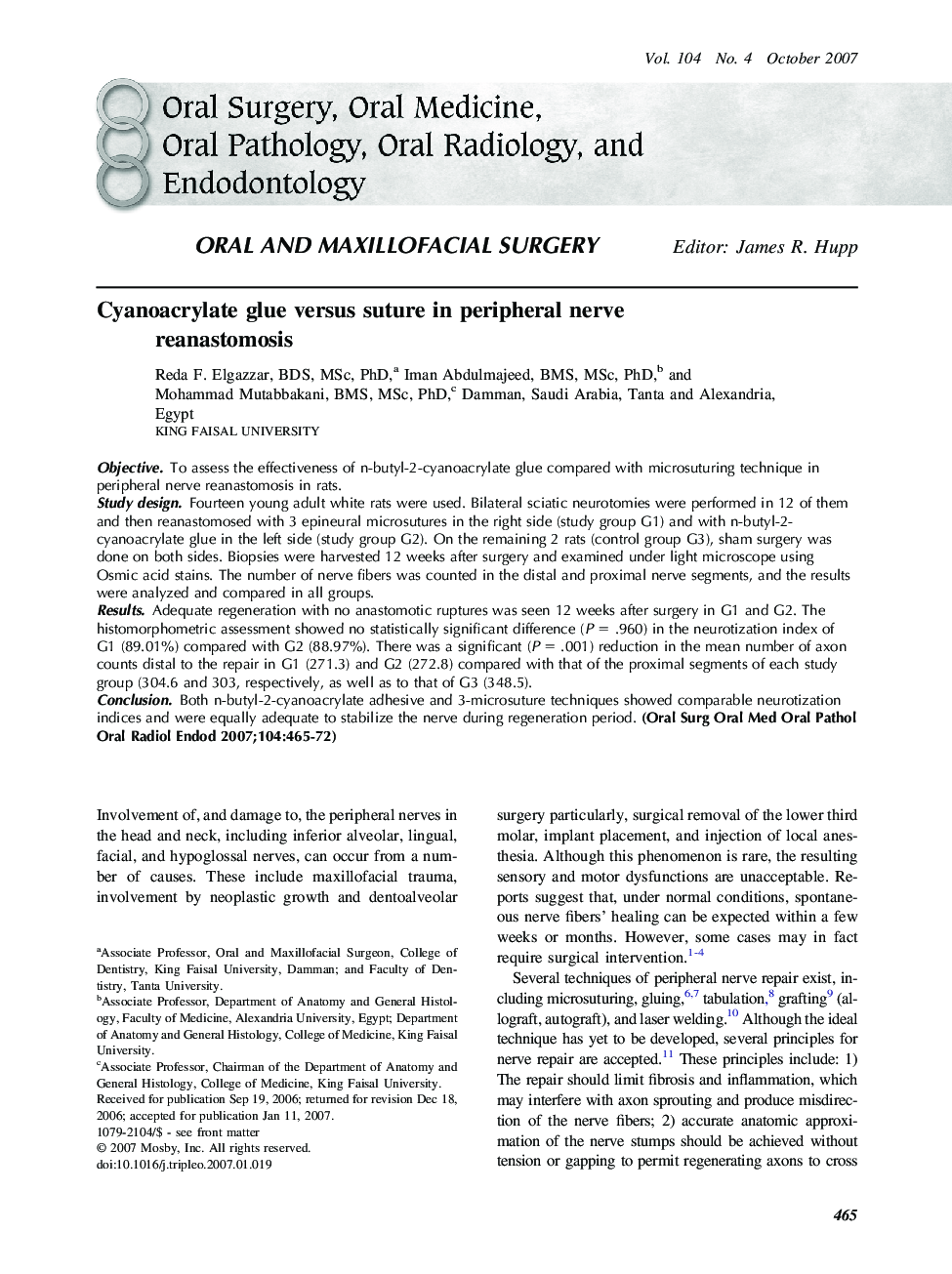| Article ID | Journal | Published Year | Pages | File Type |
|---|---|---|---|---|
| 3169279 | Oral Surgery, Oral Medicine, Oral Pathology, Oral Radiology, and Endodontology | 2007 | 8 Pages |
ObjectiveTo assess the effectiveness of n-butyl-2-cyanoacrylate glue compared with microsuturing technique in peripheral nerve reanastomosis in rats.Study designFourteen young adult white rats were used. Bilateral sciatic neurotomies were performed in 12 of them and then reanastomosed with 3 epineural microsutures in the right side (study group G1) and with n-butyl-2-cyanoacrylate glue in the left side (study group G2). On the remaining 2 rats (control group G3), sham surgery was done on both sides. Biopsies were harvested 12 weeks after surgery and examined under light microscope using Osmic acid stains. The number of nerve fibers was counted in the distal and proximal nerve segments, and the results were analyzed and compared in all groups.ResultsAdequate regeneration with no anastomotic ruptures was seen 12 weeks after surgery in G1 and G2. The histomorphometric assessment showed no statistically significant difference (P = .960) in the neurotization index of G1 (89.01%) compared with G2 (88.97%). There was a significant (P = .001) reduction in the mean number of axon counts distal to the repair in G1 (271.3) and G2 (272.8) compared with that of the proximal segments of each study group (304.6 and 303, respectively, as well as to that of G3 (348.5).ConclusionBoth n-butyl-2-cyanoacrylate adhesive and 3-microsuture techniques showed comparable neurotization indices and were equally adequate to stabilize the nerve during regeneration period.
